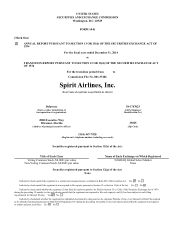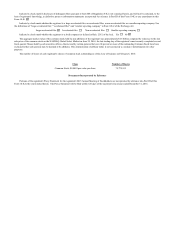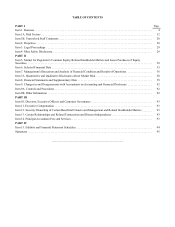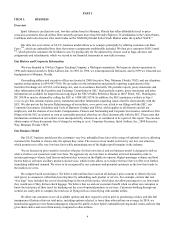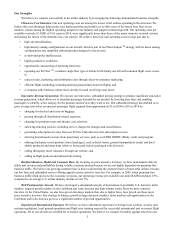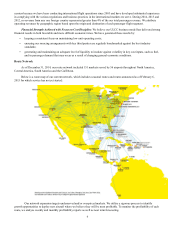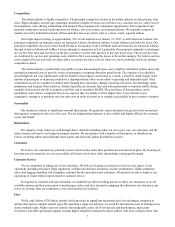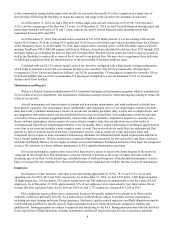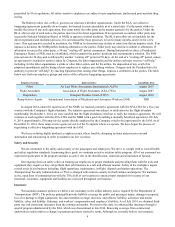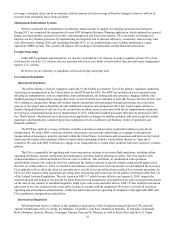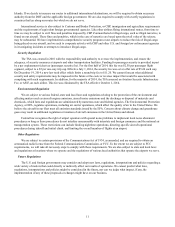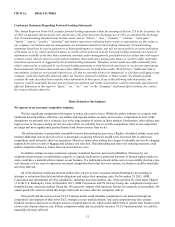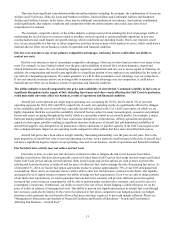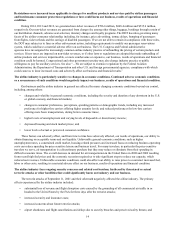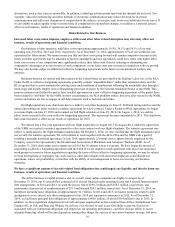Spirit Airlines 2014 Annual Report Download - page 7
Download and view the complete annual report
Please find page 7 of the 2014 Spirit Airlines annual report below. You can navigate through the pages in the report by either clicking on the pages listed below, or by using the keyword search tool below to find specific information within the annual report.7
Competition
The airline industry is highly competitive. The principal competitive factors in the airline industry are fare pricing, total
price, flight schedules, aircraft type, passenger amenities, number of routes served from a city, customer service, safety record
and reputation, code-sharing relationships and frequent flier programs and redemption opportunities. Our competitors and
potential competitors include traditional network airlines, low-cost carriers, and regional airlines. We typically compete in
markets served by traditional network airlines and other low-cost carriers, and, to a lesser extent, regional airlines.
Our single largest overlap, at approximately 51% of our markets as of January 12, 2015, is with American Airlines. Our
principal competitors on domestic routes are American Airlines, Southwest Airlines, United Airlines and Delta Air Lines. Our
principal competitors for service from South Florida to our markets in the Caribbean and Latin America are American Airlines
through its hub in Miami and JetBlue Airways through its operations in Fort Lauderdale. Our principal competitive advantages
are our low base fares and our focus on the price-sensitive traveler who pays his or her own travel costs. These low base fares
are facilitated by our low unit operating costs, which in 2014 were among the lowest in the airline industry. We believe our low
costs coupled with our non-ticket revenues allow us to price our fares at levels where we can be profitable while our primary
competitors cannot.
The airline industry is particularly susceptible to price discounting because, once a flight is scheduled, airlines incur only
nominal incremental costs to provide service to passengers occupying otherwise unsold seats. The expenses of a scheduled
aircraft flight do not vary significantly with the number of passengers carried and, as a result, a relatively small change in the
number of passengers or in pricing could have a disproportionate effect on an airline’s operating and financial results. Price
competition occurs on a market-by-market basis through price discounts, changes in pricing structures, fare matching, target
promotions and frequent flier initiatives. Airlines typically use discount fares and other promotions to stimulate traffic during
normally slower travel periods to generate cash flow and to maximize RASM. The prevalence of discount fares can be
particularly acute when a competitor has excess capacity that it is unable to fill at higher rates. A key element to our
competitive strategy is to maintain very low unit costs in order to permit us to compete successfully in price-sensitive markets.
Seasonality
Our business is subject to significant seasonal fluctuations. We generally expect demand to be greater in the second and
third quarters compared to the rest of the year. The air transportation business is also volatile and highly affected by economic
cycles and trends.
Distribution
The majority of our tickets are sold through direct channels including online via www.spirit.com, our call center and the
ticket counter, with spirit.com being the primary channel. We also partner with a number of third parties to distribute our
tickets, including online and traditional travel agents and electronic global distribution systems.
Customers
We believe our customers are primarily leisure travelers who make their purchase decision based on price. By focusing on
lowering our cost structure, we can successfully sell tickets at low fares while maintaining a strong profit margin.
Customer Service
We are committed to taking care of our customers. We believe focusing on customer service in every aspect of our
operations including personnel, flight equipment, in-flight and ancillary amenities, on-time performance, flight completion
ratios, and baggage handling will strengthen customer loyalty and attract new customers. We proactively aim to improve our
operations to ensure further improvement in customer service.
In response to customer and other demands, we modified our online booking process to allow our customers to see all
available options and their prices prior to purchasing a ticket, and have initiated a campaign that illustrates our total prices are
lower, on average, than our competitors, even when options are included.
Fleet
We fly only Airbus A320 family aircraft, which provides us significant operational and cost advantages compared to
airlines that operate multiple aircraft types. By operating a single aircraft type, we avoid the incremental costs of training crews
across multiple types. Flight crews are entirely interchangeable across all of our aircraft, and maintenance, spare parts
inventories and other operational support remains highly simplified compared to those airlines with more complex fleets. Due

